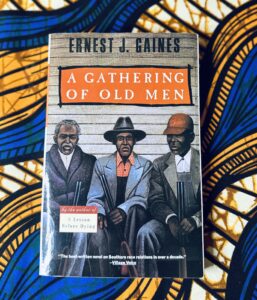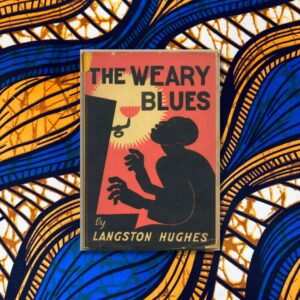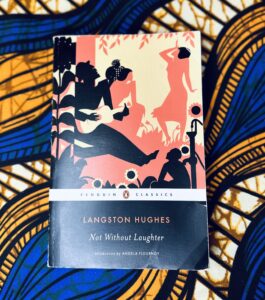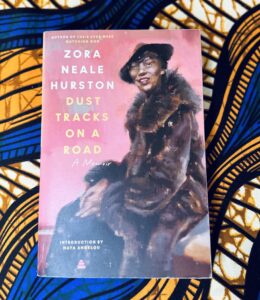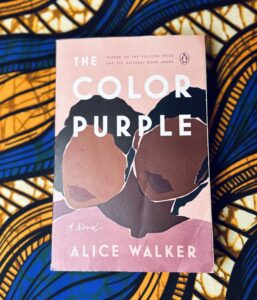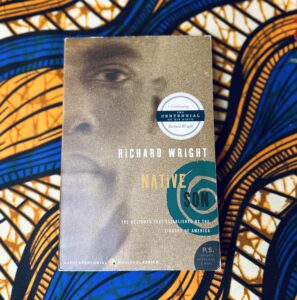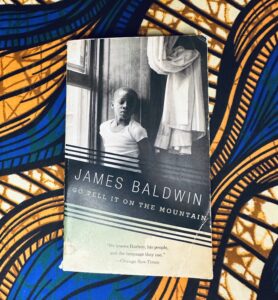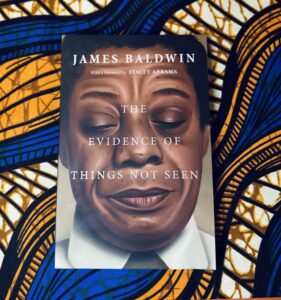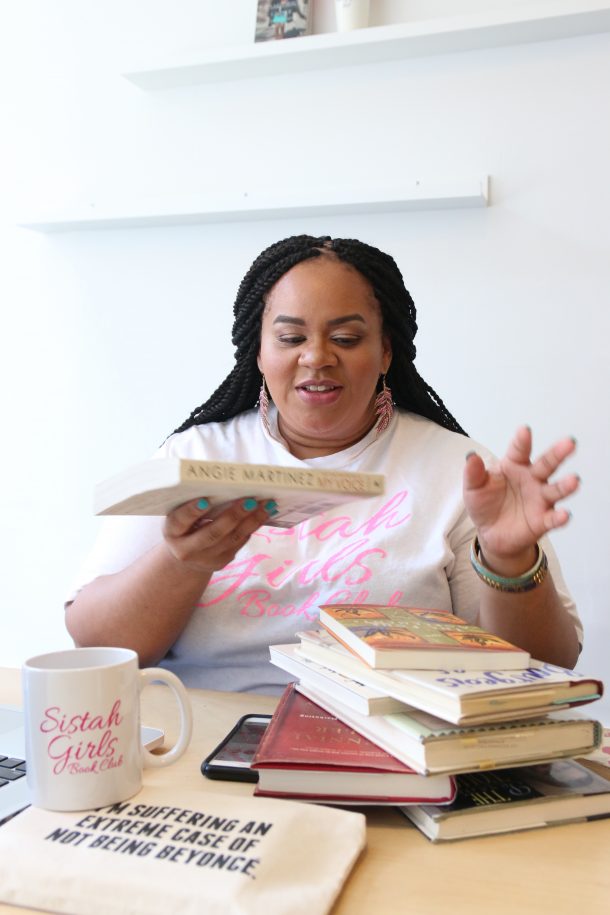Sistah Girls, did you know that Zora Neale Hurston coined the phrase, “All skinfolk ain’t my kinfolk?” Did you know that James Baldwin had the longest FBI file of any Black artist in the Civil Rights Era–nearly 1900 pages?
Join us on this journey, as we fuse Black History with Black literature to discuss some little-known facts about our favorite literary giants.
The Preservationist
You may know Ernest Gaines for his novels like A Lesson Before Dying, or The Autobiography of Ms. Jane Pittman, but did you know that Dr. Gaines was a preservationist who was born and laid to rest on land that remained in his family for five generations?
Gaines was born in 1933 on the Riverlake Plantation in Oscar, Louisiana where his parents worked as sharecroppers. He was the oldest of twelve children who grew up on the plantation’s slave quarters.
He moved to California to attend high school and then went on to serve in the United States Army where he discovered his gift for creative writing.
In his documentary An Obsession of Mine (2009), Gaines stated that he always believed that his soul was tethered to the Mount Zion Riverlake Cemetery — the historic burial site for the plantation’s Black inhabitants dating back to slavery.
He often depicted his fear of losing “sacred spaces” to urbanization or wide-scale farming, writing this in his 1983 novel A Gathering of Old Men:
“I did it for them under them trees. I did it ‘cause that tractor is getting closer and closer to that graveyard, and I was scared if I didn’t do it, one day that tractor was gonna come in there and plow up them graves, getting rid of all proof that we ever was. (Gaines, 92).
When Gaines returned to Louisiana, he built a home the Riverlake Plantation, and moved the building of his old church to his property.
With the help of his wife and some local volunteers, Gaines worked for over a decade to preserve the cemetery which included painting tombs, cutting grass, and planting flowers.
In 1995, his childhood home, The Cherie Quarters Cabins, was added to the National Register of Historic Places.
When Dr. Gaines passed away in 2019, he was laid to rest amongst the remains of his ancestors; his tombstone was inscribed with the words: “To lie with those who have no mark.”
The Dr.
When you say the name Maya Angelou do you pronounce it Ange-low or Ange-loo? Well, if you’ve been saying the former, then consider yourself ‘today years old’ in knowing the true pronunciation of the poet’s moniker.
She was born Marguerite Annie Johnson, but answered to the nickname Rita as a young child. Her younger brother Junior, who sometimes had trouble pronouncing his R’s, called her “My Sister” which was shortened to “My” and eventually evolved into Maya.
Angelou began considering adopting a stage name after earning success as a calypso dancer in the early 1950s. At the time, she was married to a Greek sailor named Tosh Angelos.
She stated this in her third autobiography, Singin’ and Swingin’ and Gettin’ Merry Like Christmas,
“‘Maya Angelos.’ Don chewed the words around tasting them… Lloyd said, ‘It sounds too Spanish. Or Italian. No, it won’t do.’ An idea broke his face wide open. ‘I’ve got it. Drop the s and add a u. Maya Angelou.’ He pronounced it Angeloo.” (Angelou, 109)
Angelou went on to receive over 50 awards and honorary degrees throughout her remarkable career, which empowered her to demand to be called Dr. Angelou. This sparked controversy as many people rejected her sense of entitlement because of her lack of educational experience.
Others argued that since the title Dr. represents mastery of one’s field, and Angelou was the recipient of some of the highest honors in the nation including a Presidential Medal of Freedom in 2011, and a National Medal of Arts in 2000, in addition to more than 20 honorary degrees from colleges and universities all over the country, that it’s safe to say put some respeck on her name and address her as she preferred to be acknowledged, Dr. Maya Angelou (don’t forget the -loo).
THE DOCUMENTER
Langston Hughes is one of the most celebrated poets and leaders of the Harlem Renaissance, but referring to him as just a poet may be devaluing his contributions as a writer.
You may be familiar with Hughes’ debut poetry collection The Weary Blues (1926), but did you know that in total, Hughes penned 16 poetry collections, 12 novels/short story compilations, 8 children’s books, several essays, 11 major plays, and 11 nonfiction books?
His oeuvre includes a Tony Award-winning opera titled Street Scene (1947) in which he contributed the lyrics to Kurt Weill’s compositions.
Another play titled Mule Bone: A Comedy of Negro Life was the source of the long-standing animosity between Hughes and his co-writer Zora Neale Hurston (more on this later).
His nonfiction catalog includes Fight for Freedom: The Story of the NAACP (1941), which was the first written text to explore the origin of the NAACP organization and its precursors.
During the Civil Rights Movement, he contributed to a weekly column with The Chicago Defender, a Black Chicago-based newspaper.
He wrote a five-volume First Book series, which includes The First Book of the Negros (1952), The First Book of Jazz (1954), The First Book of Rhythm (1954), The First Book of the West Indies (1956) and The First Book of Africa (1964).
So, as you can see, Langston Hughes was not just considered a prolific writer because of his jazzy poetic stanzas. His collection of writings played a pivotal role in the documenting of the Black history we study today.
The Genius
Zora Neale Hurston was born in 1891 and went on to become highly regarded “a genius of the south” – but did you know that she was 10 years older than the age she purported to be?
During her upbringing, Hurston attended a boarding school in Jacksonville, Florida until she was unable to keep up with her payments. As an adult, she relocated to Maryland, and in 1917 she enrolled in Morgan Academy (the high school division of Morgan College) after claiming to have been born in 1901.
This made others believe she was only 16 years old but she graduated at the legal age of 27.
She went on to continue her studies at Howard University and Barnard College and eventually crossed paths with Langston Hughes, with whom she built a rapport and began co-writing a play.
Their friendship ended however in a long legal battle for copyrights of their failed collaboration. It is believed that the two literary giants disputed over differing visions which resulted in two different versions of the play being written.
In October 1930, Hurston secretly filed for sole copyright for her version of the play she titled De Turkey and de Law. Hughes counter-filed for joint copyright for the play he titled Mule Bone.
The two battled it out in court, but things did not move in Hurston’s favor. Hughes wanted to move forward with the production of his play so he offered Hurston one-third of his royalties.
She refused the gesture, insisting that she would not make Hughes a playwright at her own expense. She eventually lost all authority over the play (which was not staged until decades after their deaths) and their friendship ended.
Hurston faced financial and medical difficulties until her death in 1960. When she was buried in an unmarked grave, it was almost as if her literary works were buried right along with her, until a fellow writer (Alice Walker) helped to lift them from obscurity.
The Reviver
Alice Walker is well known for many firsts.
She and her husband, Melvyn Leventhal (m. 1967-1976), a Jewish civil rights lawyer, were the first legally married interracial couple in the state of Mississippi.
She also made history as the first Black woman to receive both a Pulitzer Prize for Literature and a National Book Award for The Color Purple in 1983.
She has always been a celebrated writer, winning $300 for her very first published essay, “The Civil Rights Movement: What Good Was It” in 1967.
Above all, she was the first to appreciate the literary works of Zora Neale Hurston in a way that revived her legacy decades after she passed.
After reading Their Eyes Were Watching God, Walker set on a journey to rediscover Hurston’s life and literature. She eventually found herself at the Garden of Heavenly Rest in Fort Pierce, Florida where she successfully located Ms. Hurston’s unmarked grave.
In 1975, she published an article “Looking for Zora” in Ms. Magazine expressing her disappointment in the Black community for rejecting Hurston’s literary contributions. She stated that it was “like throwing away a genius.”
During her time, Hurston failed to achieve the level of success as her contemporaries because many criticized her instinct to write in a Southern vernacular, believing that it ridiculed the Black community.
Walkers’ efforts to track down Hurston’s gravesite and her instinct to share her expedition on major platforms singlehandedly revitalized interest in Hurston’s body of work.
Their Eyes Were Watching God, which was first published amid controversy in 1937 was re-issued in 1978 and sold 75,000 copies in less than a month.
Walker’s efforts launched Hurston into mainstream success for the very first time, 18 years after she passed.
Since Walker’s article, many of Hurston’s buried works were published posthumously which reintroduced Hurston to the literary public.
Her play “Mule Bone,” co-written by Langston Hughes was finally staged in 1991. A book of essays titled, You Don’t Know Us Negroes was published in 2022, and in 2018 a nonfiction book based on Hurston’s 1927 interviews with Cudjoe Lewis, the last known survivor of the Middle Passage was published by Harper Collins.
The long overdue publication of Barracoon: The Story of the Last “Black Cargo” not only added to Hurston posthumous success, but also documented the origin story of Africatown, and preserved the legacy of Cudjoe Lewis and his descendants.
In 1973, Walker had a headstone placed at Hurston’s gravesite with an inscription that reads “Zora Neale Hurston: A Genius of the South”.
The Expat
Did you know that Richard Wright is one of the most translated Black authors of fiction?
Did you know, that in the first film adaptation of Native Son, he played Bigger Thomas (a 20-year-old character) when he was 40?
As a young child in Natchez, Mississippi, Wright accidentally burned his family’s house down which landed him in an orphanage. Although he did not attend school until he was 12 years old, he went on to be awarded valedictorian of Smith Robertson Junior High School in 1925.
According to his novel Black Boy, he was offered the opportunity to give a speech at graduation but stubbornly refused until they agreed to allow him to write his own speech rather than recite one that was prepared for him.
He went on to become one of the first Black writers to make a lucrative career and to achieve fortune and fame in America, but did you know that in 1946, he packed his bags and left America forever?
In 1951 he wrote,
“I live in voluntary exile in France and I like it. There is nothing in the life of America that I miss or yearn for. Barring war or catastrophe, I intend to remain in exile. I shall, of course, keep my American citizenship, my American passport; but I prefer to live out my days among a civilized people…..” – (Wright, I Choose Exile)
In this unpublished essay which later resurfaced, Wright aired out his grievances with America’s racist ideologies stating that “there is more freedom in one square block of Paris than in the entire United States of America.”
Wright wasn’t the only Black artist who abandoned America in favor of Paris during this era — Chester Himes, James Baldwin, Josephine Baker, Beauford Delaney, and many more all felt that Paris offered a safe haven away from America’s discriminatory and racist practices.
Wright went on to pen several more novels and thousands more haikus during his sojourn in Paris. When he passed away in November of 1960, he was buried in Paris’ Père Lachaise Cemetery.
The Protégé
As previously mentioned, James Baldwin left America for France, but did you know that this move cost him four manuscripts that were contained in a lost duffel bag?
You are most likely familiar with Baldwin’s criticism of the aforementioned author Richard Wright, but did you know that it was Wright who helped launch Baldwin’s career as a writer?
According to bookriot.com, Baldwin met Wright simply by knocking on his home door while Baldwin was a 20-year-old aspiring writer, and Wright an almost 40-year-old successful novelist.
Baldwin admired Wright for his raw candor about race in America, and Wright viewed Baldwin as a protege.
Wright helped Baldwin secure a fellowship in Paris that afforded him the opportunity to travel overseas to launch his career.
Things went awry in 1949, after Baldwin openly criticized Native Son in an essay called “Everybody’s Protest Novel” claiming that its main character Bigger Thomas is a “descendant” of Uncle Tom from Harriet Beecher’s Stowe’s novel Uncle Tom’s Cabin.
Wright was immediately offended and felt betrayed and the mentorship between the two literary giants met a swift demise.
Baldwin continued to make remarks in his writings criticizing Wright for the “gratuitous” and “compulsive” violence he depicted through his Black characters.
Following Wright’s death in 1960, Baldwin began to reflect on his relationship with Wright and even expressed regret for the way their friendship panned out. He even admitted that his remarks about Wright may have been premeditated and deliberate to launch his own career, stating this in essay Nobody Knows My Name:
I had used his work as a kind of springboard into my own. His work was a road-block in my road, the sphinx, really, whose riddles I had to answer before I could become myself. I thought confusedly then, and feel very definitely now, that this was the greatest tribute I could have paid him. (19)
This Black History Month we challenge you to learn and share some known facts about your favorite Black historical figure in the comments.
RAE SCOTT IS THE AUTHOR OF THE INTERNATIONAL AND BEST BOOK AWARD WINNING FINALIST, THROUGH BLOOD AND BECOMING AND THE CONTENT CREATOR BEHIND @POETRAEBOOKS VOTED 2023 BOOK CONTENT CREATOR OF THE YEAR IN THE ALL WAYS BLACK AWARDS.
Sites Referenced:
Ernest Gaines Center | Ernest Gaines Center
National Museum of African American History and Culture
The Gilder Lehrman Institute of American History
https://www.crmvet.org/info/680000_walker_crm.pdf

